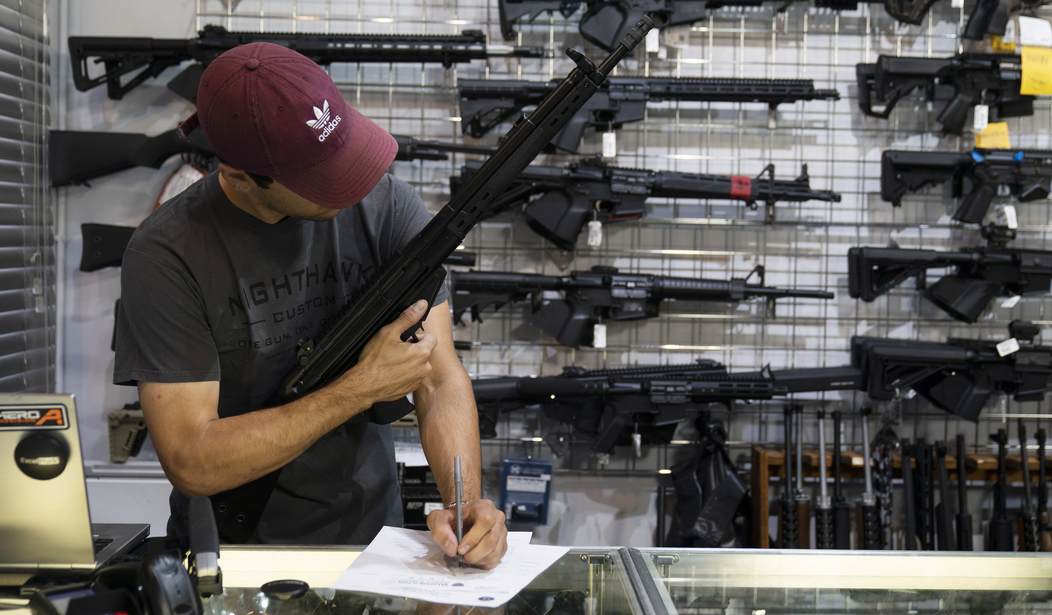A federal judge in Illinois has declined to put a stop to the state of Illinois’ new ban on so-called assault weapons, along with a similar prohibition locally imposed by the city of Naperville, ruling that the firearms in question aren’t protected by the Second Amendment in the first place.
U.S. District Judge Virginia Keller’s ruling in Bevis v. City of Naperville isn’t binding precedent, thankfully, and I’m not sure the Seventh Circuit Court of Appeals is going to be willing to play along with her assertion that semi-automatic firearms arbitrarily designated as “assault weapons” are “dangerous and unusual” given the fact that the arms in question are the most popular style of rifle sold today.
In her ruling, Kendall wrote that the Illinois and Naperville bans meet that burden: “Because assault weapons are particularly dangerous weapons and high-capacity magazines are particularly dangerous weapon accessories, their regulation accords with history and tradition.
“Naperville and Illinois lawfully exercised their authority to control their possession, transfer, sale, and manufacture by enacting a ban on commercial sales,” the judge wrote.
…
The weapons banned by the Illinois law are “unquestionably” in common use, the lawyers for the National Association for Gun Rights argued.
“An arm that is in common use for lawful purposes is, by definition, not unusual,” the lawyers wrote. “Such an arm therefore cannot be both dangerous and unusual and therefore cannot be … subjected to a blanket ban.”
Kendall ruled that the government can regulate highly dangerous arms, including assault weapons and large-capacity magazines, that pose an unusual risk that can cause greater harm and more deaths.
“The text of the Second Amendment is limited to only certain arms, and history and tradition demonstrate that particularly ‘dangerous’ weapons are unprotected,” the judge wrote.
Assault weapons are also not commonly used for self-defense, Kendall wrote, and gun owners have many other firearms they could use for protection.
Kendall’s ruling is replete with questionable arguments in favor of upholding the ban on semi-automatic firearms designated as “assault weapons,” including her assertion that a few short-lived regulations from the early 1900s are proof that semi-automatic rifles (or perhaps all semi-automatic firearms) aren’t covered under the Second Amendment’s protections.
Notably, semiautomatic weapons themselves, which assault weapons fall under, were directly controlled in the early 20th century. Rhode Island prohibited the manufacture, sale, purchase, and possession of “any weapon which shoots more than twelve shots semi-automatically without reloading.” Michigan regulated guns that could fire “more than sixteen times without reloading.” In total, nine states passed semiautomatic weapon regulations, along with Congress, which criminalized the possession of a “machine gun” in D.C., defined as “any firearm which shoots … semiautomatically more than twelve shots without reloading.” Twenty-three states imposed some limitation on ammunition magazine capacity, restricting the number of rounds from anywhere between one (Massachusetts and Minnesota) and eighteen (Ohio).
Regulations in less than half of the states is hardly evidence that these types of laws were both widespread or long lasting. There were eight states that had “may issue” carry laws on the books when the Supreme Court struck them down in NYSPRA v. Bruen, so Keller pointing to regulations in nine states (few of which actually prohibited the sale and possession of semi-automatic firearms) doesn’t have quite the heft the judge was hoping for.
Still, Keller’s weak argument still has the weight of law. Thankfully Bevis v. Naperville isn’t the only challenge to Illinois’ gun ban underway, and Keller isn’t the only federal judge that’s considering the constitutionality of the “assault weapon” prohibitions. Let’s hope the others actually look to the text of the Second Amendment along with history and tradition when making their ruling instead of just looking for any excuse they can find to keep the gun and magazine ban in place.









Join the conversation as a VIP Member